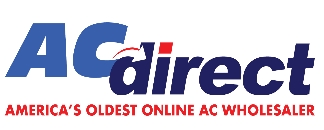How HVAC Systems Protect Against Mold and Mildew in Humid Environments
-
 By
Michael Haines
By
Michael Haines
- Aug 14, 2024

By Mike Haines 08/14 Hi, I’m Mike Haines. If you live in a humid climate, you’re probably familiar with the issues of mold and mildew. Today, I’m going to explain how HVAC systems can protect your home from these unwelcome guests by controlling humidity and keeping your air clean. Whether you’re battling dampness or looking to prevent it, I’ll show you how the right HVAC system can make all the difference.
Why Mold and Mildew Thrive in Humid Environments
Mold and mildew love humidity. These fungi thrive in environments where there is excessive moisture, which is why they’re so common in areas with high humidity. When the humidity level in your home exceeds 60%, mold spores can quickly take root and spread. Once established, mold can damage your home’s structure, ruin furniture, and pose serious health risks, including respiratory problems and allergic reactions.
High humidity creates a perfect breeding ground for mold, especially in areas like basements, bathrooms, and kitchens. These areas often experience poor ventilation, allowing moisture to accumulate, which further accelerates the growth of mold and mildew. The key to preventing this is keeping the indoor humidity levels in check—and that’s where your HVAC system comes into play.
The right HVAC system, especially one equipped with a dehumidifier, can help you maintain balanced humidity levels, preventing mold from taking hold. A Goodman gas heater, for example, can maintain a comfortable temperature while also working with dehumidifiers to control moisture levels, offering comprehensive protection.
Key Takeaways:
- Mold and mildew thrive in humid environments where moisture levels exceed 60%.
- Proper HVAC systems with dehumidifiers can help control indoor humidity and prevent mold growth.
- Systems like Goodman gas heaters can keep homes comfortable and moisture-free.
How HVAC Systems Control Humidity
To prevent mold and mildew, the first step is to control the humidity in your home. HVAC systems with built-in humidity control, or systems that work alongside dehumidifiers, can maintain the ideal indoor humidity level—typically between 30% and 50%.
An efficient gas HVAC system will not only regulate temperature but also remove excess moisture from the air. Air conditioners, for instance, naturally dehumidify the air as they cool it. When combined with a whole-house dehumidifier, your HVAC system can consistently manage moisture levels throughout your home, keeping it comfortable and mold-free.
In particularly humid areas, a propane furnace with a built-in dehumidifier is a great option. These systems work by extracting moisture from the air before it’s circulated through your home, preventing humidity from reaching levels where mold and mildew can grow. By installing an HVAC system that includes this feature, you ensure that moisture is controlled even on the most humid days.
The Role of Ventilation in Mold Prevention
Another critical component of your HVAC system’s defense against mold and mildew is ventilation. Proper ventilation ensures that air circulates effectively, reducing the amount of moisture that lingers in one place. Stagnant, humid air is a breeding ground for mold, so ensuring good airflow is essential for preventing the conditions that mold thrives in.
In humid environments, it’s common for moisture to build up in areas like bathrooms, kitchens, and basements. An HVAC system with a two-stage furnace can be highly beneficial, as it offers more precise temperature and airflow control. These systems can run at a lower speed when full power isn’t necessary, ensuring continuous airflow without overworking the system.
Additionally, exhaust fans in high-moisture areas, such as the kitchen or bathroom, should be paired with your HVAC system to help ventilate moist air outside. This combination of mechanical ventilation and efficient HVAC systems can effectively reduce humidity and prevent mold and mildew from taking root.
Regular HVAC Maintenance and Mold Prevention
Regular maintenance of your HVAC system is essential to ensuring it performs effectively in controlling humidity and preventing mold. If your system isn’t working efficiently, moisture can accumulate in the ducts or on the cooling coils, creating ideal conditions for mold growth inside the HVAC system itself.
One of the most important maintenance tasks is changing your HVAC filters regularly. Filters in Goodman gas heaters and other systems need to be replaced frequently, especially in humid environments where dust and debris can mix with moisture, leading to clogged filters. When filters are dirty, airflow is restricted, and moisture can build up in the system, leading to potential mold growth.
In addition to changing filters, it’s crucial to have your system inspected and cleaned by a professional at least once a year. Professionals can clean the ducts and coils, ensuring no mold or mildew is growing inside the system. They can also check for leaks or areas where moisture may be entering the system, addressing these issues before they lead to bigger problems.
Additional Tips for Mold Prevention
While your HVAC system plays a central role in controlling humidity and preventing mold, there are additional steps you can take to protect your home. These include:
- Using a programmable thermostat: Systems like a propane furnace or gas HVAC system with a programmable thermostat can help regulate both temperature and humidity more effectively. You can set your system to run at specific times to ensure continuous airflow and moisture control, even when you’re not at home.
- Sealing windows and doors: Ensure your home is well-sealed to prevent excess moisture from entering. Drafty windows or doors can allow humid air to enter, making it harder for your HVAC system to keep moisture levels in check.
- Investing in mold-resistant materials: In areas prone to high moisture, such as basements and bathrooms, consider using mold-resistant materials for walls, ceilings, and floors. This adds another layer of protection, ensuring mold doesn’t have a surface to latch onto.
Installing a whole-house dehumidifier: If you live in an extremely humid climate, a standalone dehumidifier that works with your HVAC system can provide extra moisture control, preventing mold growth in the most vulnerable areas of your home.
Final Thoughts
As someone who deals with allergies, I know how crucial clean indoor air is for your overall health and comfort. By choosing the right HVAC system and filters, like HEPA or MERV-rated options, you can significantly reduce allergens like dust, pollen, and pet dander in your home. Regular maintenance and proper humidity control are also essential to keep your system working efficiently and to minimize the buildup of allergens.
Remember, your HVAC system can do much more than just regulate temperature—it plays a key role in improving your indoor air quality and creating a healthier living environment. So, take the time to ensure your system is properly maintained, and consider upgrading your filters or adding air purifiers if necessary. Breathe easier knowing your HVAC system is working to keep your air allergen-free!
Thanks for reading. I hope this information helps you in your journey to creating a cleaner, healthier home!
– Mike Haines
Suggested Articles for Further Reading
Here are some additional articles that may interest you if you're looking to dive deeper into improving air quality and HVAC system efficiency:
Enhancing Air Quality in Pet-Friendly Homes with HVAC Systems
Learn how specialized HVAC filters and systems can help reduce pet dander, fur, and odors, creating a cleaner and healthier environment for both you and your pets.
HVAC Disaster Relief: Essential Comfort in Times of Need
Discover how HVAC systems play a crucial role in disaster relief efforts, providing essential heating, cooling, and air quality control in emergency situations.
HVAC and Cultural Heritage: Preserving Artifacts and Collections
Explore how HVAC systems are vital in preserving priceless artifacts and museum collections, protecting them from damage caused by fluctuating temperature and humidity.
Advanced HVAC Solutions for Net Positive Energy Buildings
Delve into the future of sustainable architecture by learning how advanced HVAC solutions contribute to net-positive energy buildings, helping them generate more energy than they consume.
Will Your Commercial HVAC System Be Obsolete in the Future?
Stay ahead of the curve by understanding the future of commercial HVAC systems and the innovations that may render older systems obsolete. Learn what business owners need to know when planning upgrades.

 and now, NASCAR Racing Sponsor
and now, NASCAR Racing Sponsor










